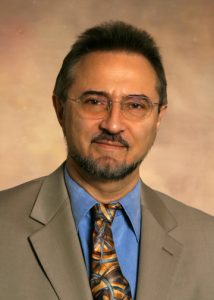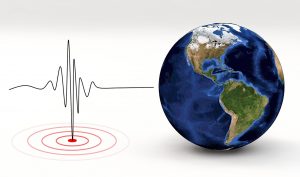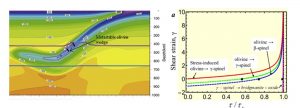“Groundbreaking” research in earthquake mechanisms sees publication in Nature Communications for AerE’s Levitas
Author: John Burnett-Larkins
Author: John Burnett-Larkins

 Hypotheses and theory regarding what occurs during deep-focus earthquakes have been taken on by Department of Aerospace Engineering Anson Marston Distinguished Professor in Engineering and Vance Coffman Faculty Chair Valery Levitas, in his first work on geophysical problems.
Hypotheses and theory regarding what occurs during deep-focus earthquakes have been taken on by Department of Aerospace Engineering Anson Marston Distinguished Professor in Engineering and Vance Coffman Faculty Chair Valery Levitas, in his first work on geophysical problems.
A recently released paper, “Resolving puzzles of the phase-transformation-based mechanism of the strong deep-focus earthquake,” has been published in Nature Communications, one of the most highly-ranked scientific journals.
Deep-focus earthquakes have a hypocenter at a depth of 350-660 kilometers and occur almost exclusively at convergent boundaries in association with subducted oceanic lithosphere. However, many questions have surrounded the details of what occurs with processes in these quakes.
The Levitas findings are being hailed as not only changing existing concepts regarding the initiation of deep-focus earthquakes, but also for changing general geophysical concepts regarding how phase transformations occur in the earth.

The research uses a combination of several novel concepts that resolve puzzles about the process quantitatively. Levitas’ research has looked at phase transformations that cause these quakes and has analyzed them in a way never before used for geologic material with what he introduced as “plastic strain-induced” phase transformations instead of conventionally accepted “pressure/stress-induced.”
The work finds an analytical 3D solution for coupled deformation-transformation-heating in a shear band. This solution predicts conditions for severe (singular) transformation-induced plasticity (TRIP) and self-blown-up deformation-transformation-heating process due to positive thermomechanochemical feedback, which sheds new light on this area of study. Access the full publication.
This is the second Levitas paper published in Nature Communications in 2022. The first was “Nontrivial nanostructure, stress relaxation mechanisms, and crystallography for pressure-induced Si-I → Si-II phase transformation” (see abstract and full publication), written together with his and AerE faculty member Liming Xiong’s former AerE Ph.D. student Hao Chen, in addition to researchers Dmitry Popov and Nenad Velisavljevic from Argonne National Laboratory.